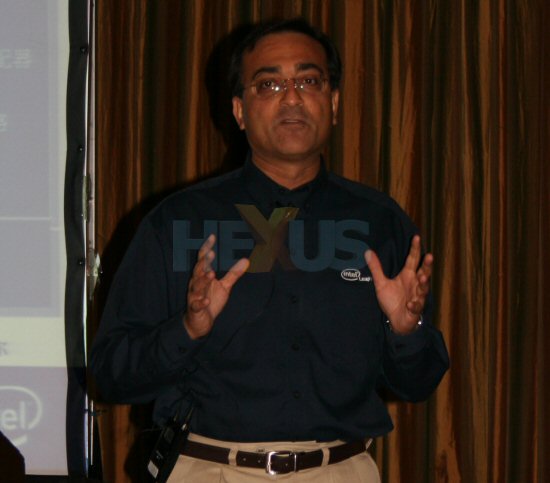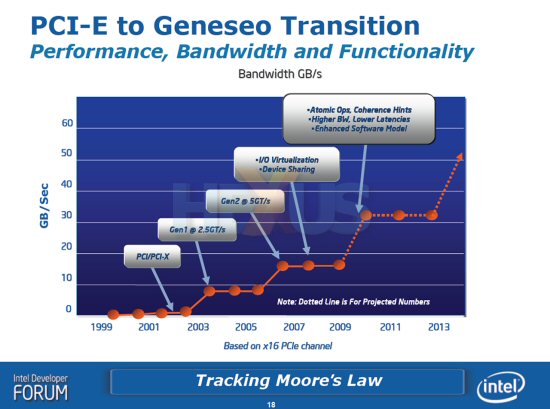It's all about dedicated application accelerators
 Remember Geneseo? No? Intel first discussed this at IDF in 2005, and Ajay Bhatt begun his discourse by reminding us that whilst computing power has increased year on year, emerging applications still require massive compute power that's best harnessed by 'specific purpose performance' via dedicated application accelerators.
Remember Geneseo? No? Intel first discussed this at IDF in 2005, and Ajay Bhatt begun his discourse by reminding us that whilst computing power has increased year on year, emerging applications still require massive compute power that's best harnessed by 'specific purpose performance' via dedicated application accelerators.
Now, your standard CPU is a general-purpose processor, which provides decent compute power over a broad spectrum. Enhancing performance for specialist areas (XML-acceleration, for example) are custom-designed hardware accelerators, usually housed on a separate PCB, that connects to the host processor via a variety of conduits (sockets, PCIe, etc.)
 Click for larger image
Click for larger imageIntel found that a number of application accelerators worked well when interfacing over the incumbent PCI-Express bus. You'll already know special-purpose accelerators for graphics (GPUs) communicate with the CPU over the PCI-Express bus, but maths-intensive accelerators, used for financial number-crunching, can require newer, faster capabilities, and that, Intel hopes, is Geneseo. It seeks to broaden the specification and increase the speed of the connection, whilst keeping it an open standard.
Geneseo, then, can be considered as a logical extention to PCIe. The following picture describes how the evolution of Geneseo ties in with PCI-Express and what we can expect by 2011. Many high end PCI-Express graphics cards require an external power supply due to the (relatively) low wattage supplied by the current PCI-Express specification, but Geneseo will increase that to cater for high performance accelerators for now and the future. <
 Click for larger image
Click for larger imageRight now, Bhatt pointed out, we're at the Gen2 point. Geneseo will increase bandwidth and reduce latency. We already know that Intel's Nehalem will not feature a traditional FSB, so perhaps Geneseo will be the interconnect of choice? Mr Bhatt's reply, when pressed, was conspicuous in its vagueness. .













